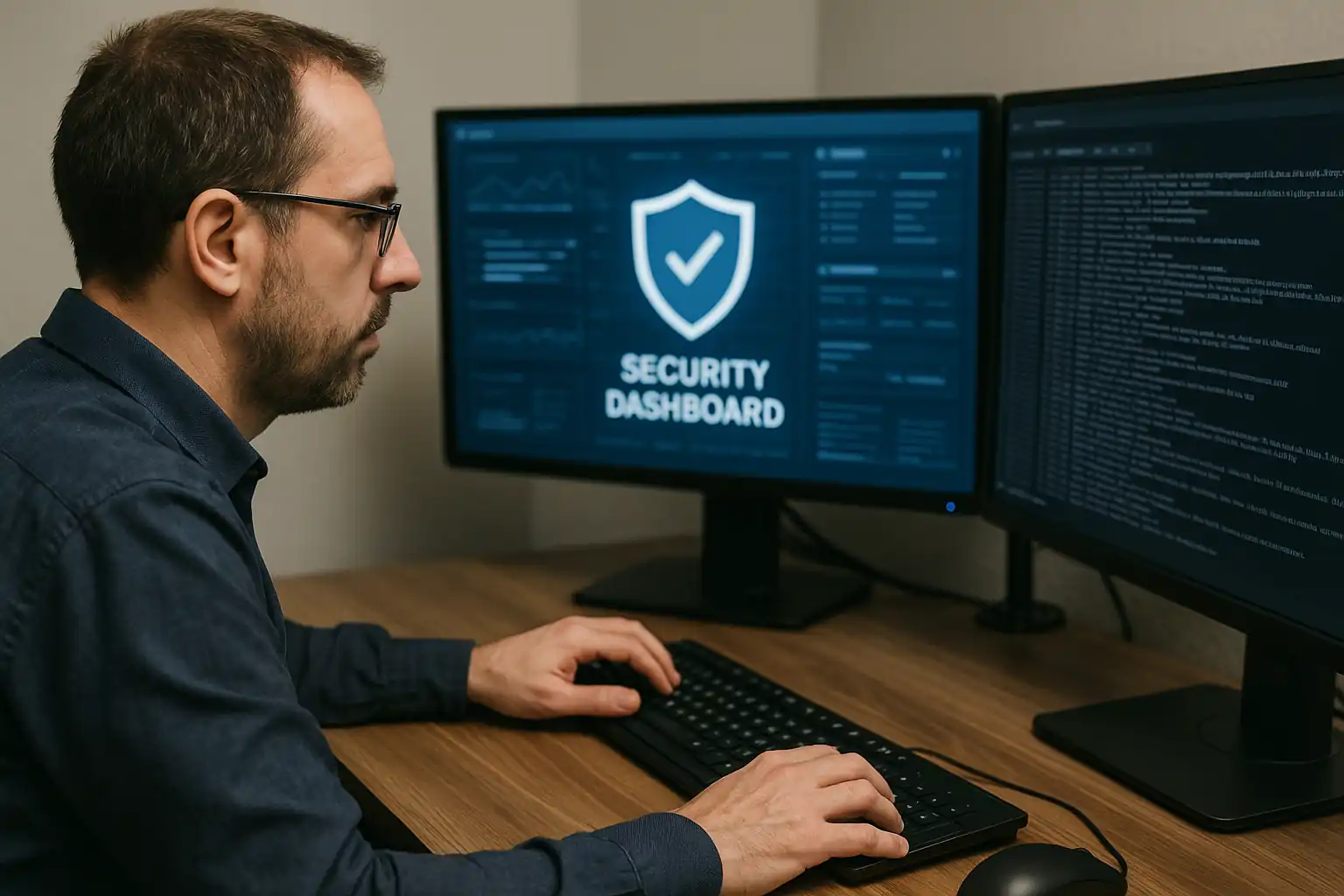Part of a Series
Ensuring Secure IT System Maintenance with CMMC’s Maintenance Domain: What You Need to Know

Key Takeaways
The CMMC Maintenance (MA) domain focuses on securing all maintenance activities, especially remote and unscheduled, to protect against vulnerabilities.
MA controls apply starting at CMMC Level 2 for organizations handling Controlled Unclassified Information (CUI).
Effective compliance requires documented policies, maintenance logging, multi-factor authentication for remote access, and supervision of maintenance personnel.
Introduction
TL;DR: To protect your IT systems from security risks during maintenance activities, understanding and implementing the Maintenance domain of the Cybersecurity Maturity Model Certification (CMMC) at Level 2 is essential. This domain introduces six critical practices focused on ensuring maintenance is authorized, monitored, and logged, whether conducted onsite or remotely.
Maintaining IT systems securely is vital because improper maintenance exposes organizations to unauthorized access, data loss, or system downtime. The CMMC’s Maintenance domain addresses this challenge by establishing clear requirements for how maintenance should be planned, executed, and tracked. For businesses dealing with Controlled Unclassified Information (CUI), these controls are not optional but mandatory starting at Level 2 certification. This article breaks down the Maintenance domain in clear terms, explains each control, highlights common pitfalls, and points to practical tools to help you streamline compliance. For a broad understanding of related topics, explore our CMMC Domains Overview guide.
Understanding the Purpose of the Maintenance Domain
Maintenance isn’t just about fixing or updating systems, it’s about doing so securely to prevent introducing new risks. Consider real-world incidents like the 2017 WannaCry ransomware attack, which exploited outdated and poorly maintained systems, causing widespread disruption. Secure maintenance protocols can help prevent such scenarios by controlling who performs maintenance and how it is conducted.
Ensuring only authorized personnel perform maintenance
Tracking exactly what changes or repairs were made
Monitoring remote maintenance access to block unauthorized intrusions
The domain’s design reflects how critical it is to manage and secure every maintenance action, acknowledging that remote or emergency maintenance holds particular risks if left unchecked.
What Does the Maintenance Domain Cover?
| Level | Number of Maintenance Practices |
|---|---|
| Level: 1 | Number of Maintenance Practices: 0 |
| Level: 2 | Number of Maintenance Practices: 6 |
| Level: 3 | Number of Maintenance Practices: 0 |
Each practice targets a different aspect of securely managing maintenance:
| Practice Code | Summary |
|---|---|
| Practice Code: MA.L2-3.7.1 | Summary: Conduct routine and necessary maintenance |
| Practice Code: MA.L2-3.7.2 | Summary: Approve and monitor remote maintenance |
| Practice Code: MA.L2-3.7.3 | Summary: Require multi-factor authentication for remote sessions |
| Practice Code: MA.L2-3.7.4 | Summary: Supervise unauthorized or third-party maintenance personnel |
| Practice Code: MA.L2-3.7.5 | Summary: Keep detailed records of maintenance activities |
| Practice Code: MA.L2-3.7.6 | Summary: Control and secure maintenance tools |
For more on access control strategies, see our post about Implementing Access Controls in CMMC Compliance.
How to Implement and Comply with Maintenance Controls
Successful compliance means demonstrating that maintenance activities are secure, auditable, and controlled. Organizations should ensure the following components are in place:
Written Policies & Procedures: Define who can approve, perform, and monitor maintenance, including remote sessions.
Access Logs: Maintain logs showing who performed maintenance, when, and details of the work completed.
Maintenance Records: Document technicians, tasks, time stamps, and approvals.
Multi-factor Authentication (MFA): Implement MFA on all remote maintenance connections to add an extra layer of security.
Tool Control: Inventory and monitor maintenance tools to prevent misuse.
Supervision: Ensure that any personnel without full authorization, such as third-party vendors, are properly supervised during maintenance.
Assessors will expect documented evidence of these controls and may verify technical configurations such as MFA and access restrictions.
Maintenance activities shall be authorized, monitored, and logged to ensure cybersecurity requirements are maintained. — CMMC Rule (§ 170.14)
Our solution simplifies compliance by automating logging, providing policy templates, and centralizing maintenance records across your systems. If you want to streamline managing these maintenance controls efficiently, consider signing up for our comprehensive CMMC Dashboard that provides automated logging, compliance tracking, and policy templates.
Avoiding Common Maintenance Pitfalls
Some frequent mistakes that jeopardize compliance include:
Assuming default security of remote support software without additional controls
Failing to document emergency or unscheduled maintenance events
Allowing third-party vendors to perform work without supervision
Using outdated or unapproved tools during maintenance
To address these pitfalls, organizations should:
Enforce pre-approval and real-time logging for each maintenance session
Train staff on supervising and communicating with external technicians
Regularly review maintenance logs and tool inventories for anomalies
Implementing a culture of accountability around maintenance will reduce vulnerabilities and ease audit stress.
Conclusion
Keeping your IT systems operational must not compromise security. The CMMC Maintenance domain ensures maintenance procedures never become a weak point by controlling who performs maintenance, how it is done, and logging every action. For organizations working with Controlled Unclassified Information, adopting these practices is a critical step toward certification and securing sensitive data.
Next steps: Audit your current maintenance practices against the six MA controls, identify gaps, and utilize compliance tools to track and document every maintenance action efficiently. Interested in learning more about the entire CMMC framework? Explore our CMMC Domains Overview for a comprehensive certification roadmap.
Also, simplify your compliance journey by signing up for the CMMC Dashboard to automate logging, track maintenance activities, and manage policy templates all in one place.
Sources
Cybersecurity Maturity Model Certification (CMMC) Version 2.0 Documentation
CMMC Rule, 32 CFR Part 2002, § 170.14
WannaCry Ransomware Case Studies, 2017 Security Reports